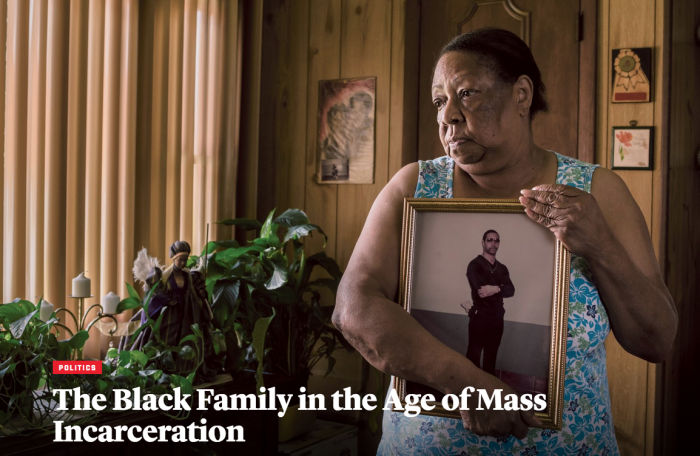
The Atlantic’s October 2015 cover story by Ta-Nehisi Coates is around 17,000 words long. And while the length of the print story is notable — it’s the longest article published by The Atlantic in more than a decade — Coates’s reporting on the devastating impact of decades of mass incarceration on black families is accompanied online by an encyclopedic multimedia package that includes original videos, annotated documents, and other response pieces.
“We publish the magazine ten times a year, so we need to take advantage of this extraordinary piece of real estate to drive a really big idea into the public consciousness,” said James Bennet, The Atlantic’s editor-in-chief and co-president. “If that is our ambition, we should be trying to reinforce that with all our other forms of storytelling.”Coates has written about mass incarceration in the past, and it’s been an ongoing theme for the magazine. The concerted digital push around “The Black Family in the Age of Mass Incarceration” drew from The Atlantic’s experience last year publishing another Coates cover story, “The Case for Reparations.” That was also a multi-part piece accompanied online by photographs, original video, and interactive maps.
For the main story online, Coates wrote annotations that were incorporated into the article through a clickable [+] that expands to reveal the full text. (Some of the infrastructure behind these online annotations was first developed when The Atlantic remade for the web a 2005 cover story by David Foster Wallace called “Host,” which had included colorful annotations next to the printed text in the magazine.) The text of the 1965 report “The Negro Family: The Case for National Action” is also reproduced online with clickable annotations as a supplement to Coates’s piece. Coates’s annotations on the mass incarceration piece do not appear in the print version, and there are also a few slight head/subhead differences between print and digital.
In addition to editorial leads on the print and digital sides, a large team of designers, fact checkers, proofers, and coders worked on everything from debugging the site to digitizing and proofreading the supplementary documents.
Anyway, finishing a big haul for @TheAtlantic and feeling grateful for having a team. @SStossel
@JaniceCane @YAppelbaum
— Ta-Nehisi Coates (@tanehisicoates) August 22, 2015
From the beginning, the team was set on creating original videos to go with the online version of Coates’ piece. The Atlantic has been experimenting freely (and sometimes quite successfully) with original video for a few years now).
“We’re trying to move away from video that simply recapitulates an argument. We like to part from the story in some ways,” Bennet said. “And it’s difficult, all the layers you have to think about, the sequences of images, the music — you don’t want to do anything that comes across as jokey or trivial.” In the end, the video team settled on two animated pieces and a mini-documentary profiling one of the families Coates interviewed for the story.The October issue isn’t on newsstands yet, but Bennet thinks that even online readers might grab a print issue. Plenty of people who read “The Case for Reparations” online ended up wanting their own physical copies of that magazine issue, he said.
@tanehisicoates Do you know when the 10/15 Atlantic will be on newsstands? Would like to grab a print copy.
— Fred Beukema (@beukema) September 16, 2015
Conversation about the piece will continue on The Atlantic’s “blogging” platform Notes, and can go on for “as long as people still want to talk about it,” Bennet said. A background section that Coates wrote for the mass incarceration story has already run on Notes, along with other shorter debate and discussion pieces. The Atlantic is also planning an event around the story’s topics.
“This is the best use of The Atlantic,” Bennet said. “We’re publishing pieces on really consequential subjects, reframing the way people think about them, and thinking about a cover story as being at the center of a constellation of different, but deeply related, stories that find their own lives purely online, in print, or both.”